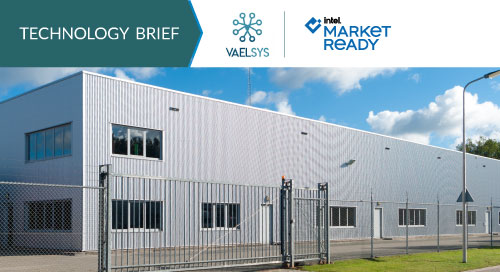Fill form to unlock content
Error - something went wrong!
Your content is just a step away. Please submit below.
Thank you!
Bolster Perimeter Protection with Video Analytics

A sheep straying into a guarded facility could just be an animal that is lost or separated from its herd. But there have been very real cases of people dressed like sheep walking into critical infrastructure facilities and stealing equipment.
A human can easily tell the actual animal from a fake. But a tired human can slip up. While critical infrastructure facilities might be fully equipped with video cameras, watching hours upon hours of footage can be mind-numbing. In such instances, humans can make expensive mistakes.
It’s why perimeter protection using video analytics and a network of cameras is a job that’s ripe for automation. “Using computer vision and applying analytics makes a lot of sense because machines can analyze video 24 hours a day without getting bored or losing attention, especially in areas where nothing happens most of the time,” says Eduardo Cermeño, CEO of Vaelsys, a company that specializes in AI vision solutions.
Security Automation for Intruder Detection
Vaelsys offers Deepwall, a perimeter protection solution that provides intruder detection, which is more advanced than simply identifying and detecting humans. “We can detect people that are in places where they should not be and we’re very accurate at doing so. We can detect not only walking but also running and crawling,” Cermeño says.
And yes, Deepwall can deal with humans disguised as sheep. “It’s not just about humans or human behavior, it’s about the behavior of suspicious elements. When human intelligence tries to trick artificial intelligence, you need something beyond person recognition, we detect people that don’t want to be detected. We analyze behavior, we analyze how elements are moving, how critical an area is, a lot of information goes into our algorithm,” Cermeño says. Sometimes, an umbrella moves around in strange ways and in unexpected places, and this suspicious activity Deepwall detects.
The Deepwall algorithm is a potent combination of deep neural networks integrated with computer vision and applied to a network of cameras. The cameras can be standard definition (SD), high-definition (HD), or thermal. The thermal imaging equivalent of the solution is called Deepwall Thermai. The kind of camera used depends on the distance that needs patrolling. “If you’re talking about perimeter protection, the farther out you’re able to detect, the better,” Cermeño says. Vision cameras can perform up to 80 meters before losing accuracy while thermal equivalents can cover several hundred meters.
The combination of #VideoAnalytics and camera imaging is particularly attractive in #remote and expansive locations. @Vaelsys via @insightdottech
Perimeter Protection for Widespread Operations
The combination of video analytics and camera imaging is particularly attractive in remote and expansive locations. For example, solar farm operators face theft of resources like copper, a common component of photovoltaic panels.
When such incidents happen, it’s not just the loss of copper that’s a problem but also the downtime during which the farm does not generate electricity. “To prevent such incidents, you place cameras on the perimeter, connect those cameras to our solution. And the Deepwall system will analyze the video feed. When it detects an intruder, it’s going to generate an alarm and call the monitoring station to take action,” Cermeño says.
High Performance and Low-Power Computing
Vaelsys works with an extensive range of Intel® Core™ Processors to accommodate banks of cameras. One of the advantages of Intel CPUs is that they deliver processing power without having to rely on energy-consuming GPUs. Being energy efficient saves money and helps companies achieve sustainability goals.
Plus, the Intel® OpenVINO™ toolkit helps companies like Vaelsys test-drive AI and computer vision solutions, Cermeño says.
Use Cases for Video Analytics
Beyond perimeter protection, Cermeño sees video analytics as a powerful security solution, able to detect people or vehicles in restricted areas, but also as a perfect support tool for safety supervision. Computer vision can be helpful to detect someone who has fallen or a person not wearing the proper safety gear.
For its part, Vaelsys hopes that the robust shell it has created with the Deepwall solution—metadata generation for video and video optimizations for the Intel platform—can readily transfer to a variety of computer vision applications.
Instead of recognizing intruders, for example, solutions could detect special ambulances. Companies interested in a specific object could piggyback on the Vaelsys computer vision platform V4 and plug in the recognition engine for the particular use case. Then “you’ve got a complete solution that’s going to be able to work with any camera on the market and that’s easy to integrate with any software,” Cermeño says. The process can work with Vaelsys vision analytics developed in-house or other third-party implementations.
The packaged solution Vaelsys delivers stems from a market need to turn a proprietary AI model into a viable implementation. After all, simply having a model is not enough; you need to use it with a web interface and integrate with a bank of CCTV cameras, Cermeño says.
Such a plug-and-play approach to computer vision and object detection dramatically reduces the cost of product development. And that’s a good thing, whether video analytics technology ensures worker safety by detecting helmets or protects perimeters by detecting fake sheep.
This article was edited by Georganne Benesch, Editorial Director for insight.tech.